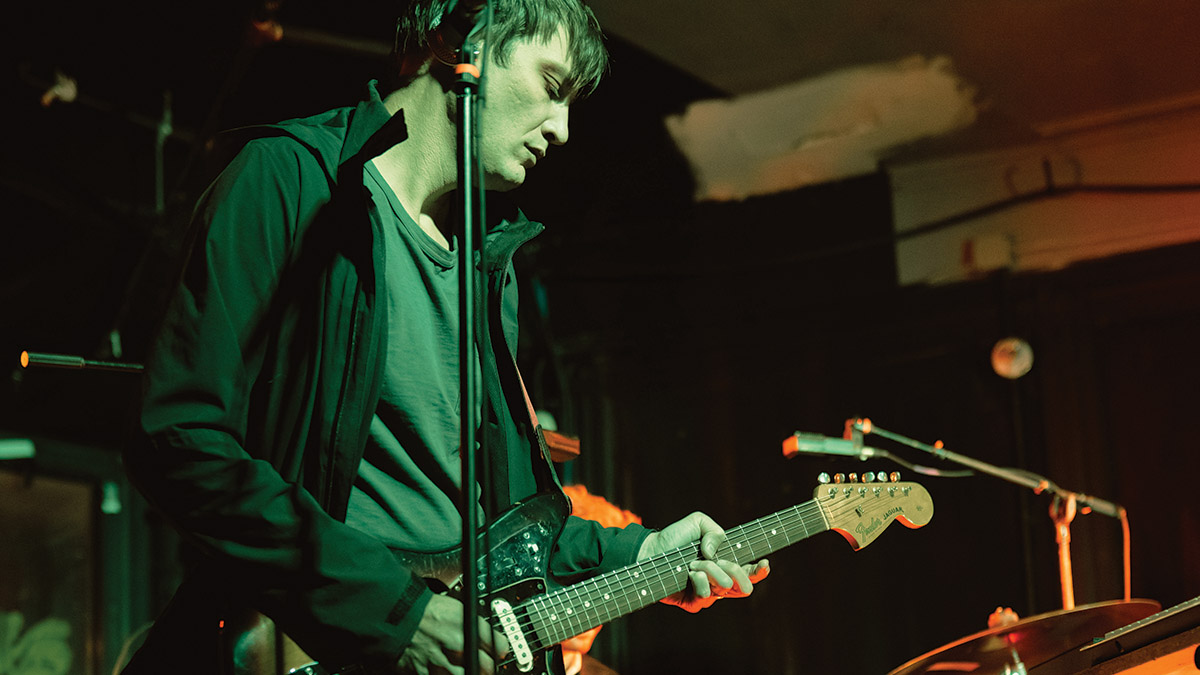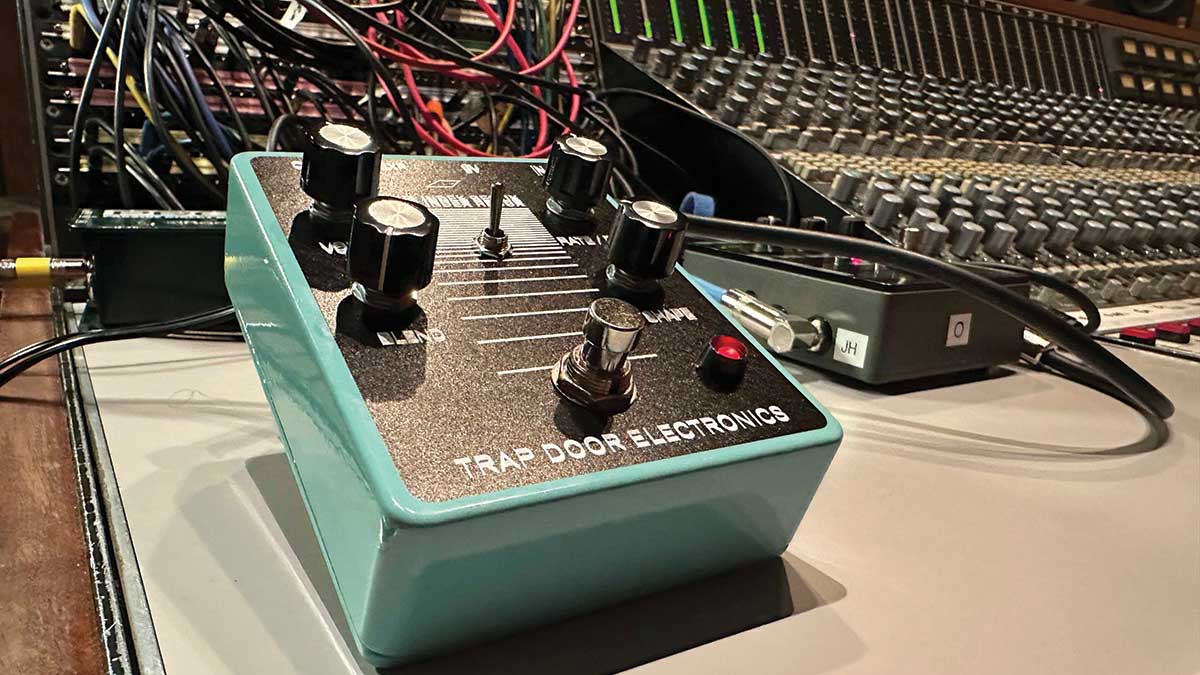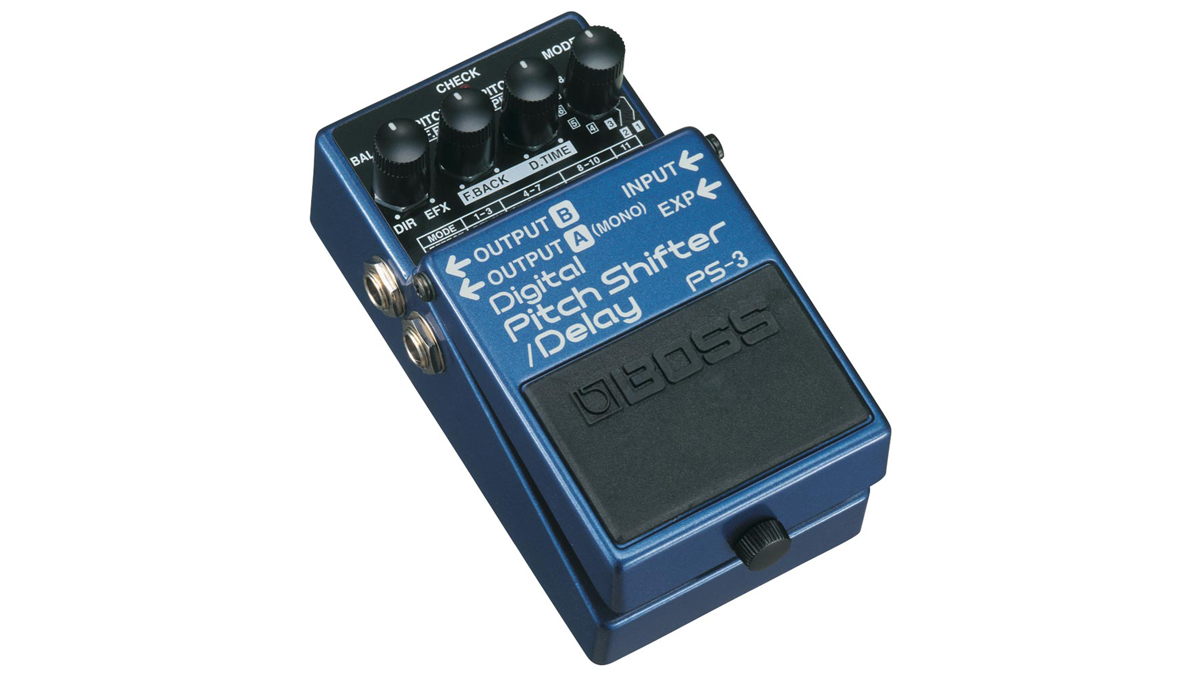“A lot of the pedals I use are to make guitars sound less like guitars”: Travis Johnson reveals the PS-3 secrets behind Activity’s sound, and what’s next for Trap Door Electronics
An alumni of Death By Audio, Travis Johnson is taking guitar sounds into uncharted territory with his band and his boutique pedal firm, Trap Door

Though he’s a self-described “guitar junkie” – having played in a number of bands over the years and built up a solid profile as a pedal builder for Death by Audio and a new company, Trap Door Electronics – Travis Johnson enjoys letting his instrument play more of a supporting role in his newest project, Activity.
The Brooklyn-based quartet just released their second album, Spirit in the Room, with electronics and synths co-existing with heavily effected clean guitars – to the point where it can be a challenge discerning which is exactly which.
It’s this ethereal and eclectic approach to sonic experimentation that allows Johnson and his bandmates – Jess Rees (guitar/vocals/keys), Bri DiGioia (bass/vocals), and Steven Levine (drums) – to prevail in the abstract, dreaming up floaty atmospheres that eventually morph into meditative trances.
As he explains to Guitar World, the group is undertaking more of a modern twist on psychedelic rock, though with some obscure vintage influences coalescing with left-field British sounds from the Nineties.
“I guess it was a conscious decision to have the guitars sit in the background like that,” Johnson says.
“Sometimes it’s up front, but a lot of the time it’s not. We’re influenced by a lot of krautrock like Can and Neu! and more recent stuff like Broadcast, Portishead, and Beak. With those bands, there is guitar – it’s definitely in there – but quite often you can’t tell if it’s the main thing the song was written around. We’re all about the swirl of noise as a whole.
“And while this is the furthest I’ve ever been from ‘guitar music,’ the guitar is the only thing I truly know how to play. My previous projects were always inching closer and closer to this sound. I started off playing indie rock, which is very guitar-driven, then moved toward music that was mixed with electronics but still mainly guitars. Then I got more into samples in my previous band, Grooms. When that band ended, it was close to this, and now I’ve decided to go even further in that direction.”
Get The Pick Newsletter
All the latest guitar news, interviews, lessons, reviews, deals and more, direct to your inbox!
What’s your approach when it comes to blending guitars with other instruments like keyboards and synths?
“The electronic stuff is often written on a sampler like the Elektron Digitakt. Then we bring it into the practice space for the instruments to play over. We’ll have the sample going through the PA really loud and the rest of us feeling out whatever we can imagine or do.
“It pushes you into a place where you’re no longer having to carry the song, because there’s already this pre-existing core to it. It’s this subliminal thing. And a lot of the pedals I use – including what I make in my own company, Trap Door Electronics – are to make guitars sound less like guitars.”
It’s an interesting talking point. To some guitarists that might sound like sacrilege; to others, that’s often where the beauty lies.
“A lot of it boils down to taste and preference. Do you want the sound of a drum machine with a really distorted guitar over it, like Nine Inch Nails? Or do you want to hear something more subtle, where it’s an element but not single-handedly carrying the song? Both are totally cool, but I guess we fit into the latter.
“It’s hard to say what our approach is because it took such a long time for us to get where we are now, honing it so that when I get something going on the sampler, I have a good idea of what I want everything else to be. It took time feeling it out.
“Having references like Can really helped, because I often wonder what they would do. But interestingly, they didn’t have all the gear we have now! I guess I’m going along with what sounds cool with the tools available to me.”

Tell us about your main guitars and guitar amps on this album.
“My main guitar is an American Jaguar from 2004, or sometimes a crappy Nineties Squier Strat, which I put Fender American Vintage ’65 pickups in. All my guitars are in weird tunings, and these are tunings I’ve always generally stuck with. I really like [low to high] C#, G#, C#, F, F, C, which has this nice 'seventh chord' kinda sound [C#maj7]. None of my guitars are that expensive – it’s just the stuff I could afford at the time, going into a Vibrolux, which is a great pedal-platform amp.”
A lot of the stuff you’re hearing is from Death by Audio. Almost every song on this album has one of their pedals
Speaking of pedals, tell us more about your role at Death by Audio.
“I started off by just helping out, and by the end I was a small-percentage owner. At some point in 2018 I decided it was time to move on and do other things, but I hadn’t really figured out what that was at that point. So a lot of the stuff you’re hearing is from Death by Audio. Almost every song on this album has one of their pedals.
“My friend Jeff Berner [ex-Psychic TV] produced the album and actually ended up telling me to turn the Evil Filter off because it was always on! I’d run on a certain setting for the cutoff with a Moog expression pedal, which I’m constantly using for different parts.
“I might go for a really rolled-off kind of sound with no highs, for example. And I was also using the Death by Audio Rooms [Stereo Reverb] a lot. The distortion on the first album came from a JHS Colour Box; on this one it was the Recovery Effects Pearl. I also love my Boss PS-3 Pitch Shifter/Delay.”
On which songs specifically can we hear these pedals?
“On Department of Blood, there’s no guitar at all. By the third track, Careful Let’s Sleepwalk, things get really noisy. Me and Jess were going for this 'total chaos in one take' kinda vibe, going as crazy as we can. For me, a lot of those extreme noises came from the PS-3 on the detune setting.
“I’d send that into the reverb and do a lot of string scrapes to make it sound really atmospheric. There are also some actual guitar parts on the song, too… but they’re pretty minimal! My favorite song on the album is Where the Art Is Hung, which is sung by Jess while I do really subtle stuff in the background.

“I'd be adjusting the cutoff on the Evil Filter with massive amounts of reverb from the Rooms alongside some detune from the PS-3. I’d rock the expression pedal fully open for that Cocteau Twins (Lexicon 480L processor), really bright, crystalline sound. Those pedals ended up on almost every song in some combination. I was also running synths through those pedals.
“And speaking of synth sounds, I used the Eventide PitchFactor on a few things. There’s a synth setting that makes your guitar sound like a Theremin. I used that on Sophia. Jess has a totally different rig, she uses stuff by Hudson Electronics and the Cutting Room Floor reel-to-reel overdrive/echo by Recovery Effects, among other things.”
Exactly what are you hoping to achieve with Trap Door Electronics?
“It all started last summer. My first pedal is the Exit Index Redux, because when I was at Death by Audio I did this limited-edition pedal there called the Exit Index. I noticed they were starting to go for more than what they should have been, and I didn’t want people spending too much money on them.
“There were also a few things I wanted to tweak. I wanted it to get a lot louder and I wanted the expression function to do more. I’m an expression addict; I love sweeping through sounds as I’m playing. On the original I hadn’t quite nailed everything it should do. I also wanted the tremolo to sound better – because it’s a big weird messy tremolo pedal, basically, but one that also distorts.”
Josh Scott is the genuine article. That guy really loves pedals – to the point where he’ll talk about other brands and rival products
It feels like good timing. Many would say the world has gone effects mad in recent years. Just look at what happened with the DigiTech Bad Monkey after JHS owner Josh Scott featured it on his YouTube channel.
“It’s true! I started the company not long ago and feel lucky that people have been buying my pedals. I’ve become more aware of new companies over the last few years – there are loads out there.
“As for Josh, I think it’s really cool how he’s started his channel and, sure, he mentions the products JHS sells, but he also loves recommending all these other companies doing cool stuff. He’s the genuine article. That guy really loves pedals – to the point where he’ll talk about other brands and rival products.”
Aren’t parts more expensive and harder to source right now?
“They can be. That’s another thing I realized; in the four years since I’d been at Death by Audio, things had changed. Costs were different because of COVID, especially semiconductors. The heart of the Exit Index Redux is this obsolete op-amp, which is… obsolete! I can only find old ones.
“I did wonder to myself if I’d chosen the wrong time to go into this, because everything is more expensive. Not prohibitively, but there’s less margin for profit and things are harder to source. It took a while to get everything I needed. This pedal is basically an obsolete op-amp that wants to be abused and create this sputtering envelope tremolo sound. I bought a couple of thousand op-amps once I found them!”
What’s next for your brand?
“Right now, I’m working on the schematic for a prototype. It’s a gain-stagey distortion that can go from boost to overdrive to distortion to fuzz to oscillation, with a nasty-sounding filter that can bring out a lot of different tones, depending on what you want. I think it’s going to be pretty cool!
“This will actually be the second prototype for it because the first one came back and I wasn’t in love with it, so I wanted to tweak it. I think the third pedal will have these interesting filter chips I found, which I want to experiment with. Most of it will be stuff that enables you to sound less like a guitarist and more like a synth player if you want, but it will suit more traditional applications too.”
For fuzz, I think the Fuzz War wins every time. It’s Death by Audio’s flagship and just sounds awesome, doing everything I’d want a Big Muff to do without losing any of the frequencies I want to keep
Finally, what would you say is the greatest pedal ever made?
“I don’t know! I will probably regret saying this, but the Boss PS-3 is amazing. I originally got it for that backwards, shimmery ambience on setting 7. That pedal came out in the mid-Nineties and decades later I still hear bands using it in the coolest ways. There are 11 modes and they all sound different. You can put a guitar or a drum machine through it, so it can do a lot more than most pedals.
“For fuzz, I think the Fuzz War wins every time. It’s Death by Audio’s flagship and just sounds awesome, doing everything I’d want a Big Muff to do without losing any of the frequencies I want to keep when I turn it on. I’d say tuners are pretty important too!”
- Spirit in the Room is out now via Western Vinyl.
Amit has been writing for titles like Total Guitar, MusicRadar and Guitar World for over a decade and counts Richie Kotzen, Guthrie Govan and Jeff Beck among his primary influences as a guitar player. He's worked for magazines like Kerrang!, Metal Hammer, Classic Rock, Prog, Record Collector, Planet Rock, Rhythm and Bass Player, as well as newspapers like Metro and The Independent, interviewing everyone from Ozzy Osbourne and Lemmy to Slash and Jimmy Page, and once even traded solos with a member of Slayer on a track released internationally. As a session guitarist, he's played alongside members of Judas Priest and Uriah Heep in London ensemble Metalworks, as well as handled lead guitars for legends like Glen Matlock (Sex Pistols, The Faces) and Stu Hamm (Steve Vai, Joe Satriani, G3).
“I was in a frenzy about it being trapped and burnt up. I knew I'd never be able to replace it”: After being pulled from the wreckage of a car crash, John Sykes ran back to his burning vehicle to save his beloved '76 Les Paul
“His songs are timeless, you can’t tell if they were written in the 1400s or now”: Michael Hurley, guitarist and singer/songwriter known as the ‘Godfather of freak folk,’ dies at 83










